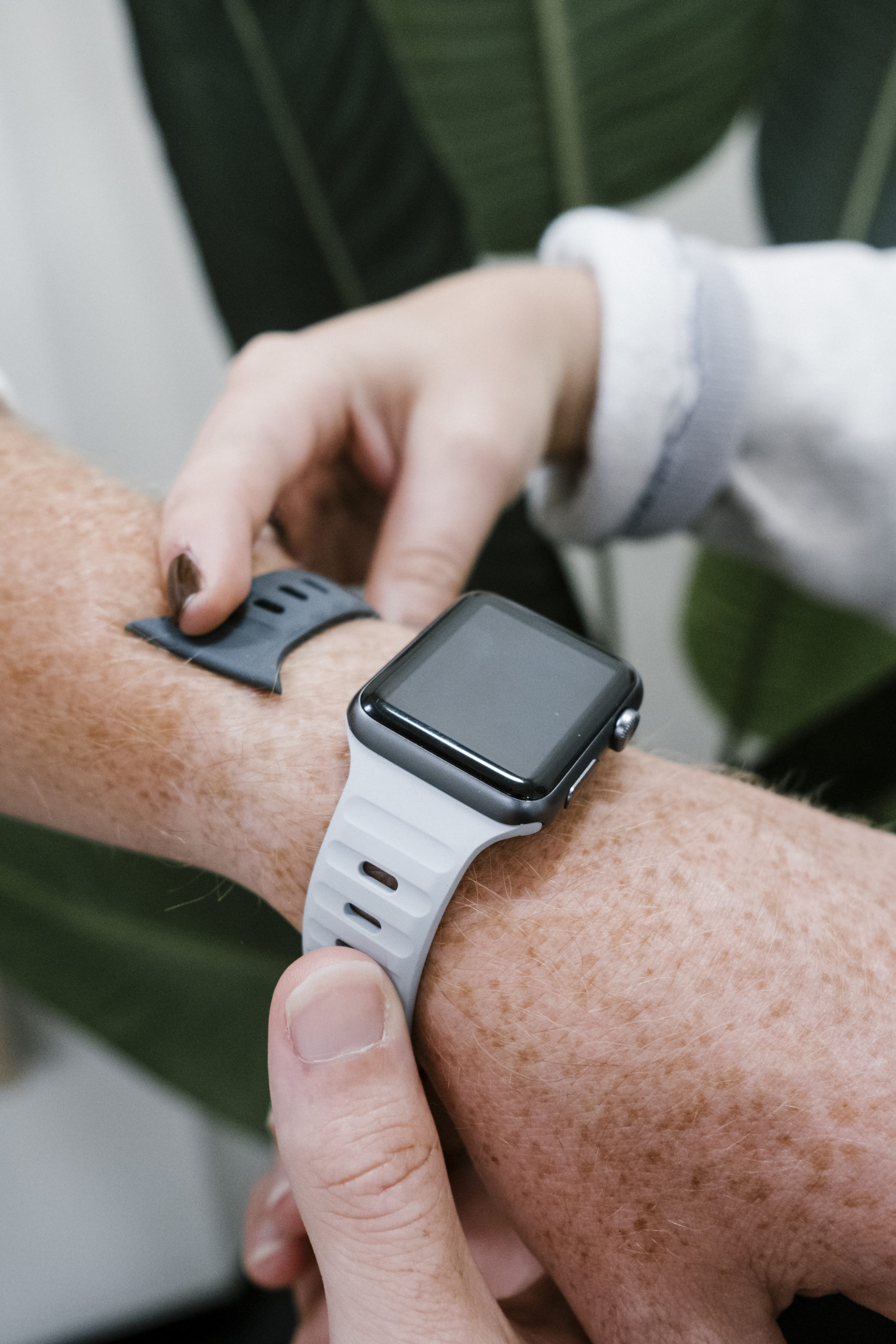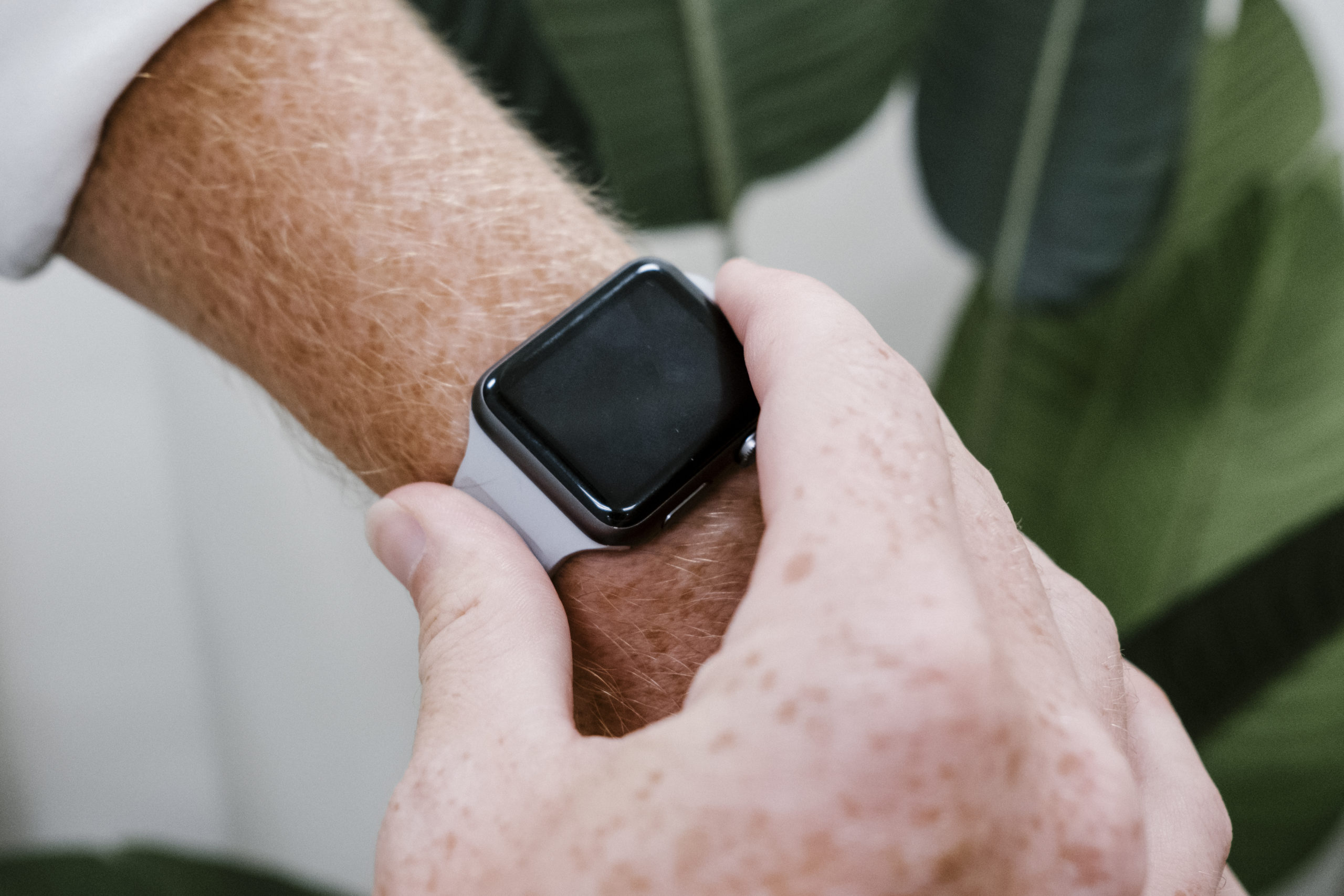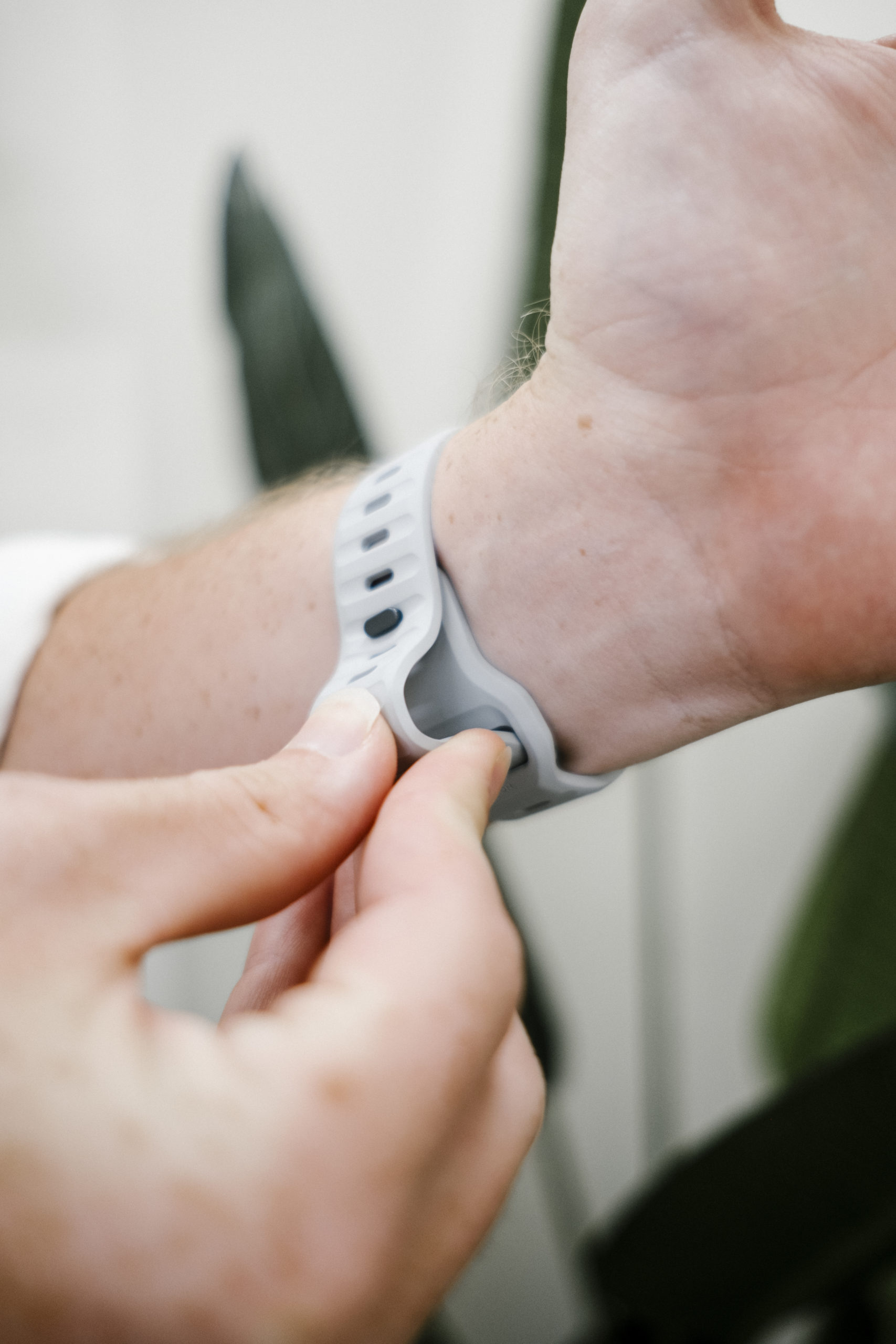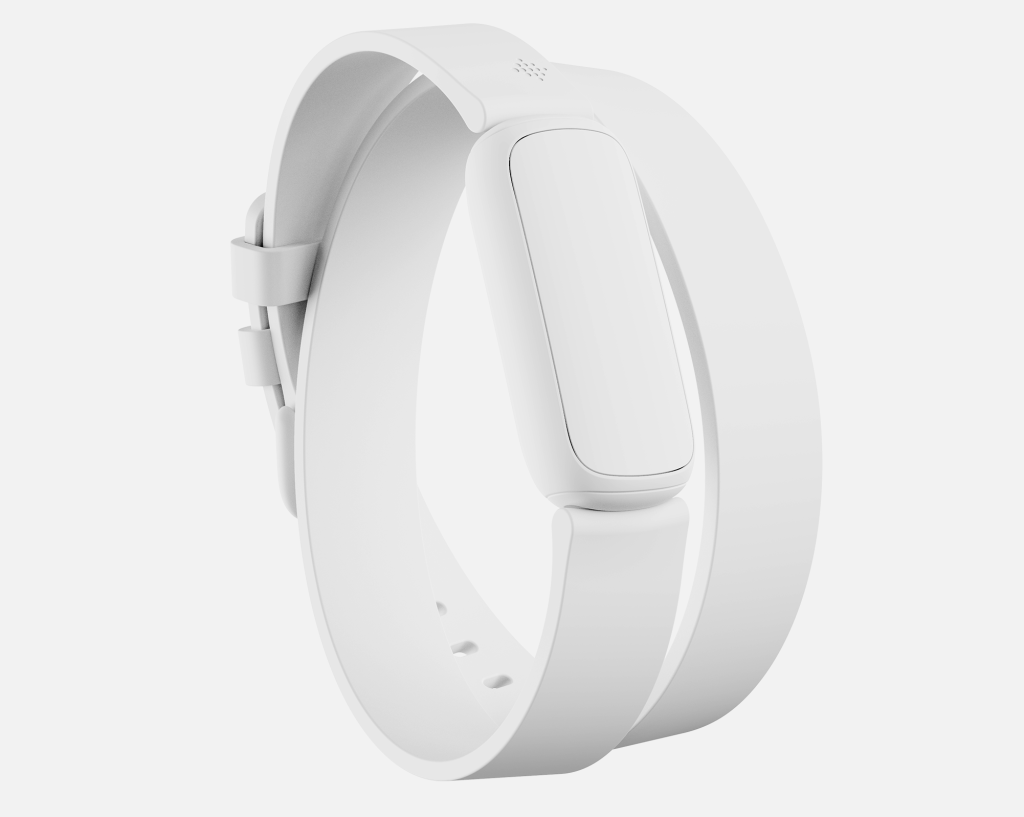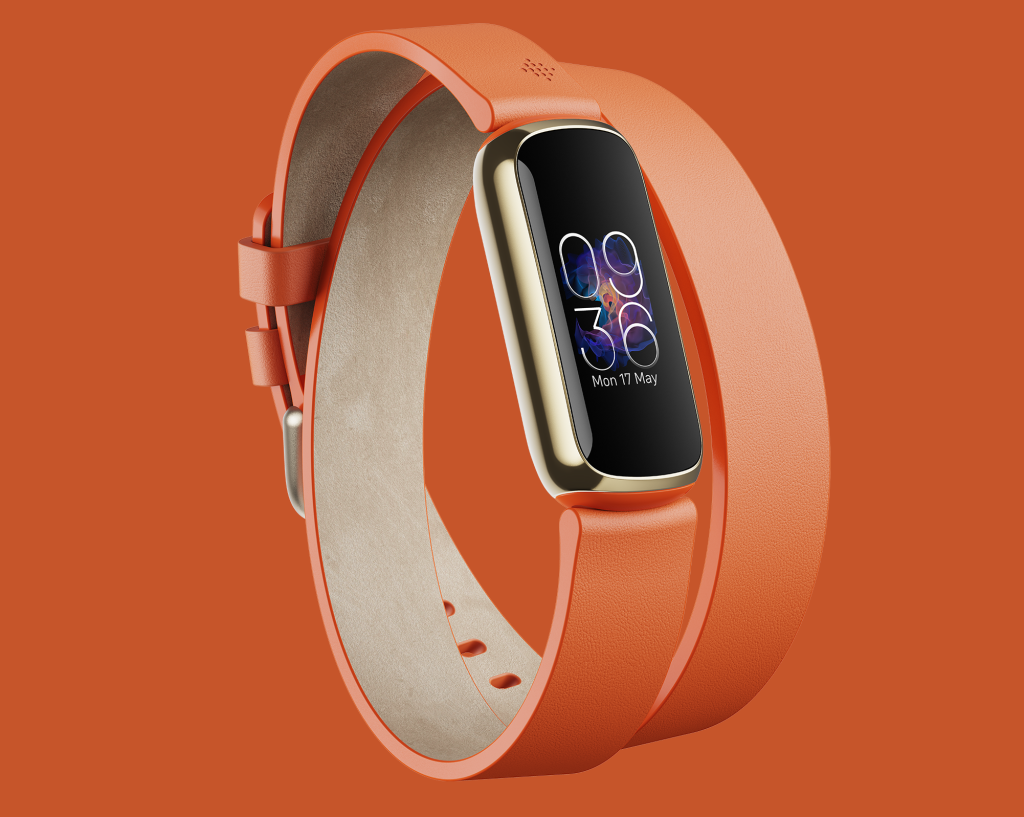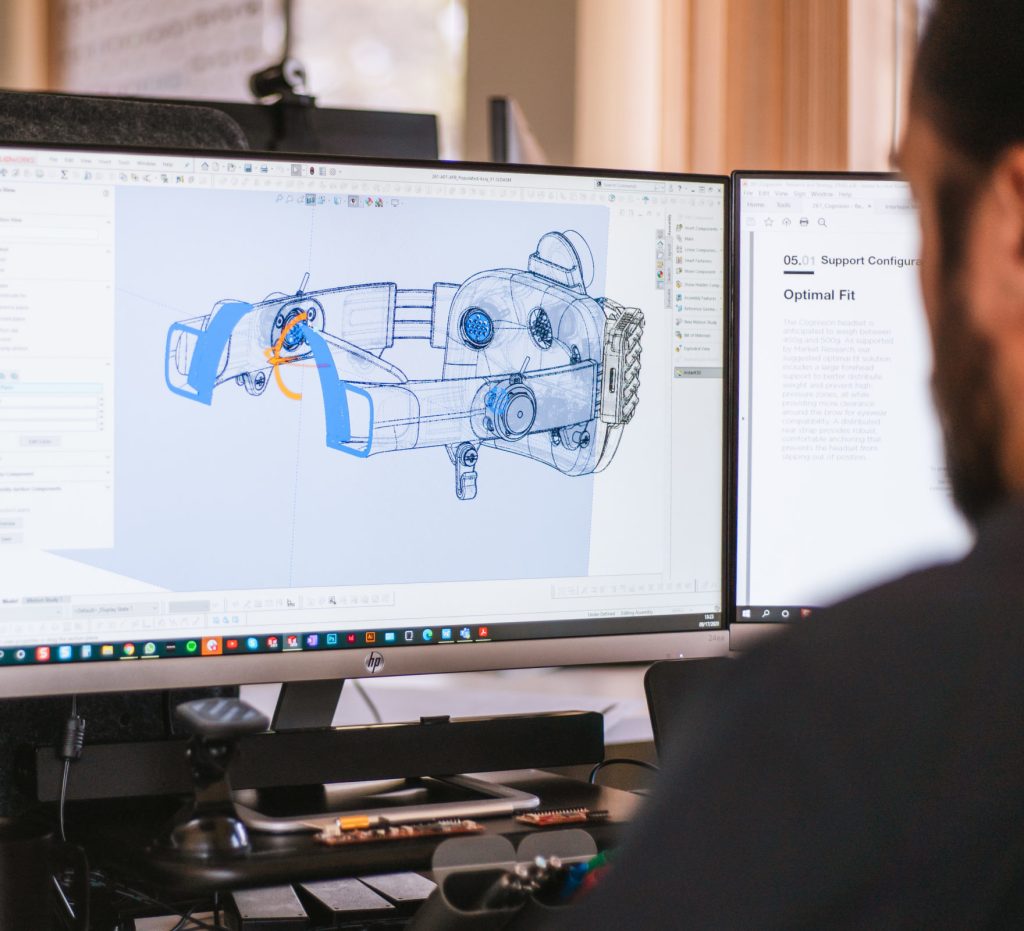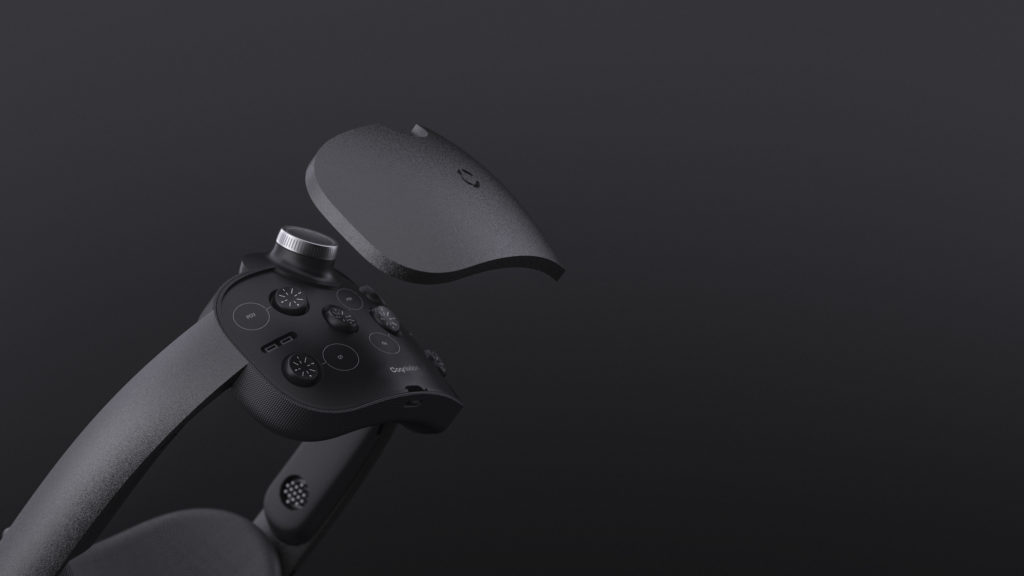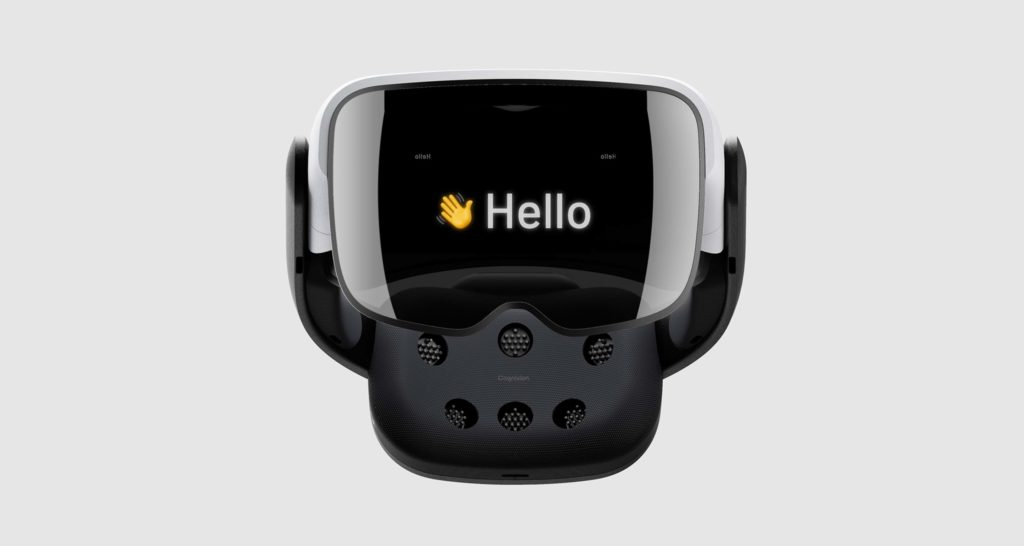
Communication: it’s fundamental. Whether communicating verbally, through sign language, or with technology, it’s imperative to the human experience. If you think about it, where are we without a voice of our own? You use your voice to speak up for your beliefs, to articulate your opinion, and to communicate with the world–it’s a human right.
Individuals who experience speech disabilities have been fighting to find a voice of their own for too long. They have grown up in a society where accessibility is limited, and there hasn’t been focus in finding better solutions to their challenges. More specifically, the assistive technology industry has relied on repurposed consumer electronics, which are often years behind what is actually possible. This problem has continued to be a disservice to those who could benefit from this technology the most. The population in need has been given devices that are often outdated, immobile, and at times lacking in accessibility.
Cognixion–a neural interface startup based out of Santa Barbara– believes that every individual deserves a solution as unique as they are, no matter their background. When reminded of those affected by communication disabilities worldwide, Cognixion deems it should be possible to construct a single tool for communication, access, and everything else one might need assistance with. This was when our collaboration went into play. Together, STEL and Cognixion created a concept that extends abilities to the most vulnerable, giving those who need it a solution to better navigate the world.
COGNIXION’S MISSION
Cognixion is known as a mission-driven company. From the beginning, their vocation has been to “unlock speech for the hundreds of millions of people who are affected by communication disabilities.” This purpose has been deeply embedded in every aspect of their work. Their aim is to provide both affordable and accessible equipment to those experiencing speech disabilities, so the world for these individuals will look and feel very different in the next decade.
Cognixion asks us to imagine “a world where there are thousands of creators, scientists, artists, engineers, change-makers, and philosophers just like Stephen Hawking, contributing to society now that they have a voice.” At the end of the day, they wish to create accessibility for all, no matter the circumstance.
Since our founding, STEL has focused on collaborating with companies that push for social impact, sustainability, and ethical practices in order to better our society. When we learned about Cognixion’s drive to create accessibility for all, there was no debate on whether or not STEL wanted to collaborate with them.
Pete Ducato, CEO of STEL
THE RELATIONSHIP THAT CREATED THE CXN ONE
With Cognixion and STEL having complementary drives to create impactful products, working together on CXN ONE was an easy decision. Our collaboration began three years ago, when Co-Founders Pete Ducato and Ryan Olson connected with Cognixion’s founder, Andreas Forsland. With both Cognixion and STEL based out of Santa Barbara, Andreas was able to see firsthand what our in-house Industrial Design and Mechanical Engineering teams were capable of creating, as well as our team’s collective passion for creating impact through design and pursuing the things that inspire us everyday.
Since Cognixion traditionally specializes in software development, they needed a partner that could develop a physical platform that could leverage their groundbreaking programs. Through product design and prototyping, STEL was able to give shape to such a platform, allowing users to have a physically tangible embodiment of these life-changing communication tools.
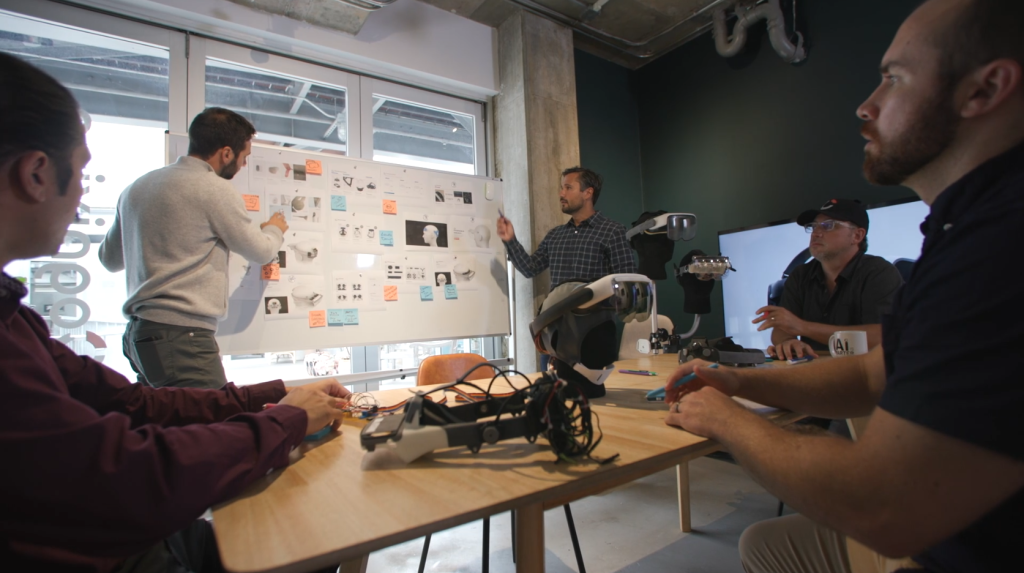
MEET CXN ONE
STEL and Cognixion worked together to create a product that blurs the line between assistive technology and the world of communication. CXN ONE is the world’s first wearable speech generating device that combines a Brain Computer Interface with Augmented Reality to enable communication like never before. Designed to be entirely wireless, mobile, and robust, it goes wherever the user goes.
CXN ONE is usable by tetraplegic users with severe disabilities and individuals with progressive or acquired disabilities. The interface is compatible with those affected by ALS, Cerebral Palsy, Multiple Sclerosis, spinal cord injuries, Parkinsons, cerebrovascular incidents (CVI or stroke), and other acquired brain injuries where existing touch and/or eye tracking technologies are insufficient or difficult to use.
One primary goal in the design of the headset was to minimize the fatigue users had commonly experienced with previous assistive technologies, allowing them to wear the product for extended periods of time. By packaging various technologies within a unit that fits well, feels balanced, and is minimally obtrusive, users can feel more comfortable and confident in corresponding with the world around them.
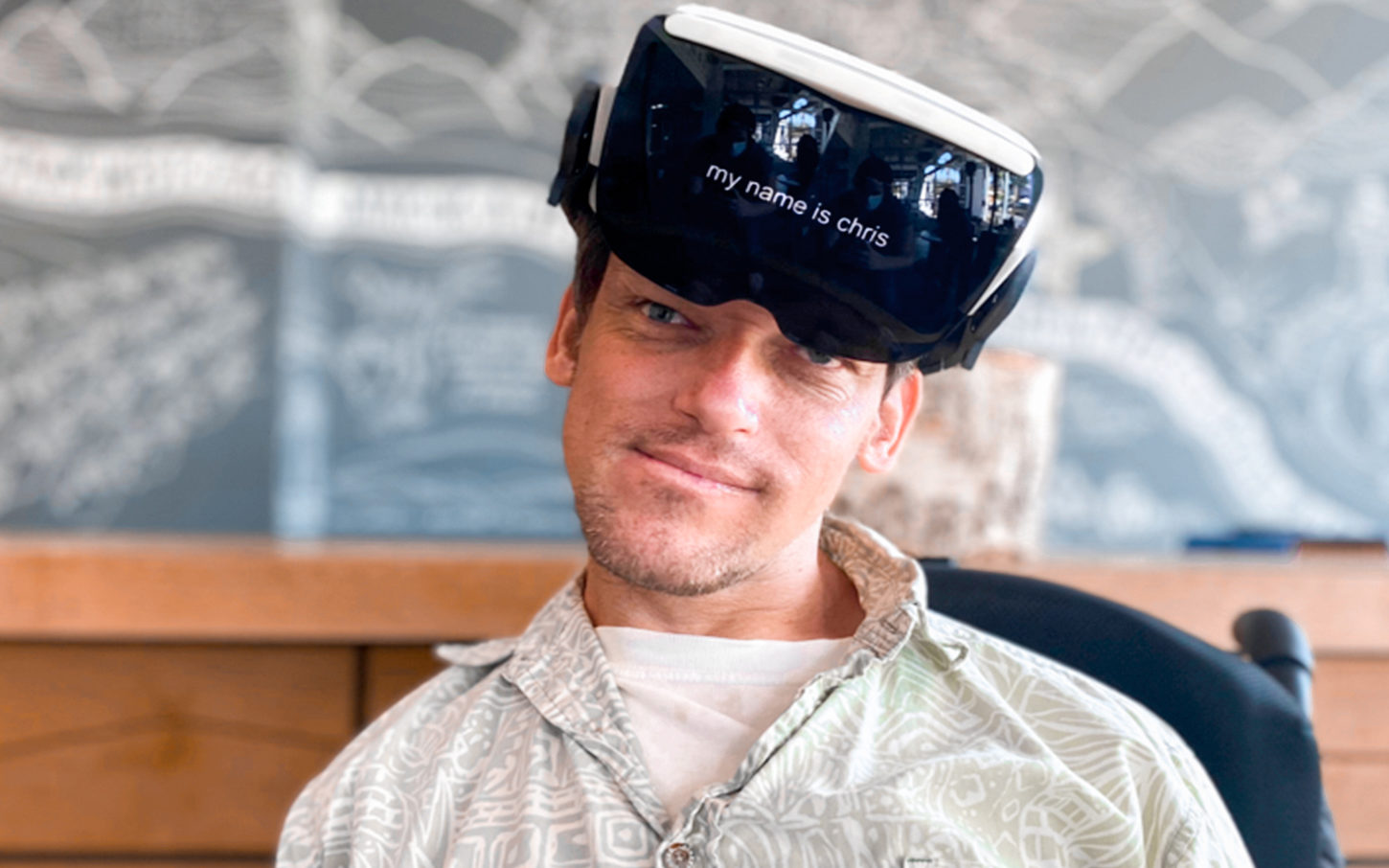
“STEL’s main focus when creating the headset’s design was to always stay focused on the user. So we asked ourselves, what will make them more comfortable when wearing the headset? How long will the headset be used throughout the day? How do you blend a person with a device? We took note of the technical and ergonomic requirements when the design process started, but we also wanted to draw out specific feelings and emotions the user would experience when utilizing CXN ONE. We wanted the device to be approachable; for the user to be inspired to wear the product and feel a sense of confidence due to its simplicity and aesthetic appeal.”
Marco Vanella, STEL’s Creative Director
CXN ONE’s final form needed to be accessible and comfortable for all types of people. Marco describes above how the aesthetics of the headpiece needed to feel human–not like an intimidating or awkward piece of intrusive equipment.
In regards to creating a package blending CXN ONE’s software with Marco’s design, STEL’s Director of Engineering Jared Naito worked on multiple prototypes in order to optimize the internal configuration of the headset.
“In addition to focusing on the ergonomics and aesthetics of the product, we also needed to pay close attention to the technical drivers and requirements for the headset. Fitting all of the signal acquisition and processing hardware that powers the CXN ONE inside a safe device with minimal mass and balanced weight distribution presented a host of challenges. In the end, though, we were successful in our endeavor to create a headpiece that was both aesthetically pleasing, confidence-inspiring, and able to function the way it was intended.”
Jared Naito, STEL’s Director of Engineering
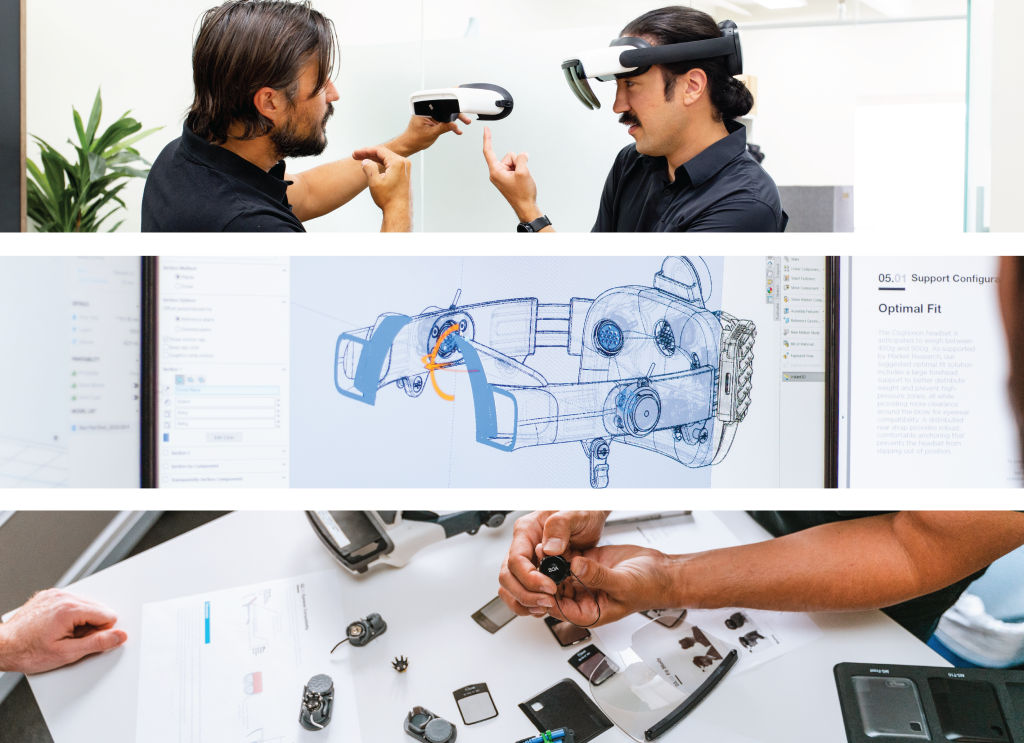
ACHIEVEMENTS
In the recent months, both STEL and Cognixion have received multiple recognitions and awards for their collaboration and work done on CXN ONE. In September of 2021, Cognixion ONE received a Gold Award in the IDSA IDEA Awards. In October, the device was nominated for a Red Dot Luminary Award, one of the five nominees chosen out of the 4,000 Red Dot entries received. We also were awarded ‘Best of the Best’ for the 2021 Red Dot Awards.
In November, Cognixion announced they had received $12 million in seed funding to “develop AI-powered neural interfaces that unlock speech and smart home controls for the hundreds of millions of people worldwide with communication and physical disabilities” (Cognixion). The funding that was raised will help Cognixion develop “new adaptive interfaces that make the Assistive Reality technology easier to use by everyone.”
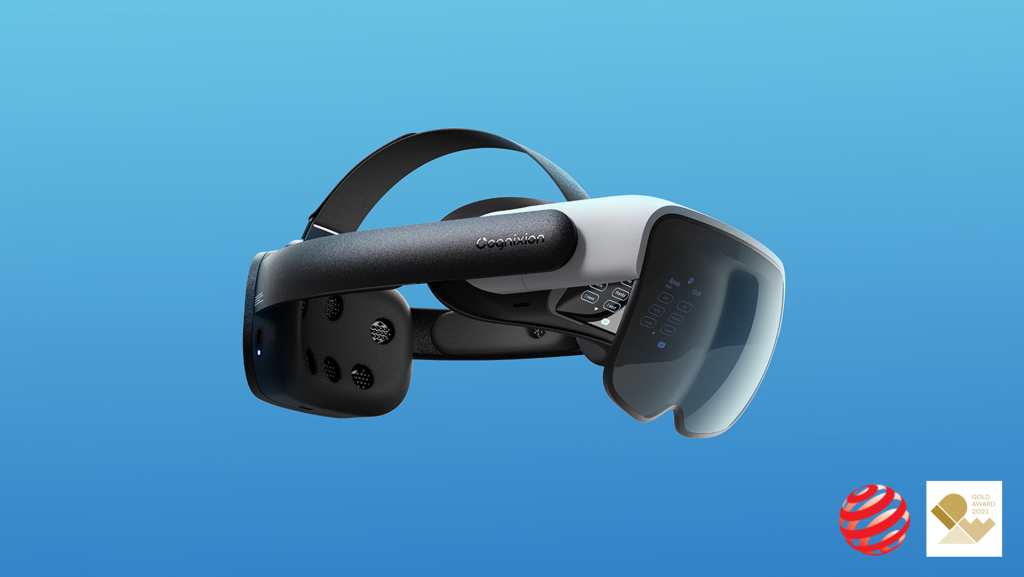
CXN ONE IN THE FUTURE
Here at STEL, we are so excited to see what the future of Cognixion will do for those experiencing communication disabilities:
“From a human-to-human perspective, this device redefines what it means to communicate in real time. It uses speech generation to speak – not text, message, or otherwise indicate – with others, as humans have done since the very beginning of our species. Furthermore, the use of a brain-computer interface allows those with certain comorbidities to utilize the platform, even if previous communication aides have been incompatible. It’s also interesting to consider all of the opportunities that exist for devices like CXN ONE to leverage automations and digital assistants [like Alexa] to interact with the IoT-connected and “smart” devices around them, enabling the same access to convenience and tech tools most people take for granted.”
Jared Naito, STEL’s Director of Engineering
With the excitement surrounding our work and collaboration with Cognixion on this project, we are truly delighted to see where this takes our partnership, and we look forward to more opportunities in creating more products like this in the future. CXN ONE was built on the basis of giving those who need it a voice of their own. We believe that with the advanced technology we have at our disposal today, it is possible to continue to build streamlined tools for communication, access, and interaction. In a world where accessibility and communication seems to be lacking for those experiencing speech disabilities, we want to be sure that everyone has an efficient and effective mode of communication available.
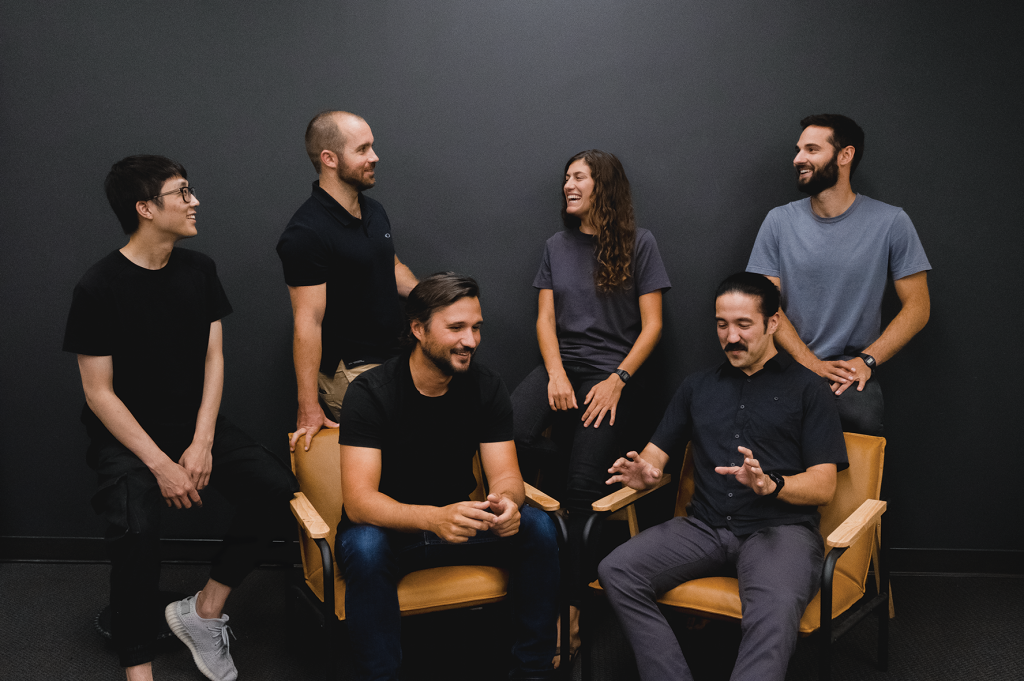
Prototyping, often the most exciting and realizing step, is arguably the most valuable phase in the product development process. Prototypes enable critical conversation and decision making, so a thoughtful prototyping process with effective prototypes makes the difference between a good product and a great one.
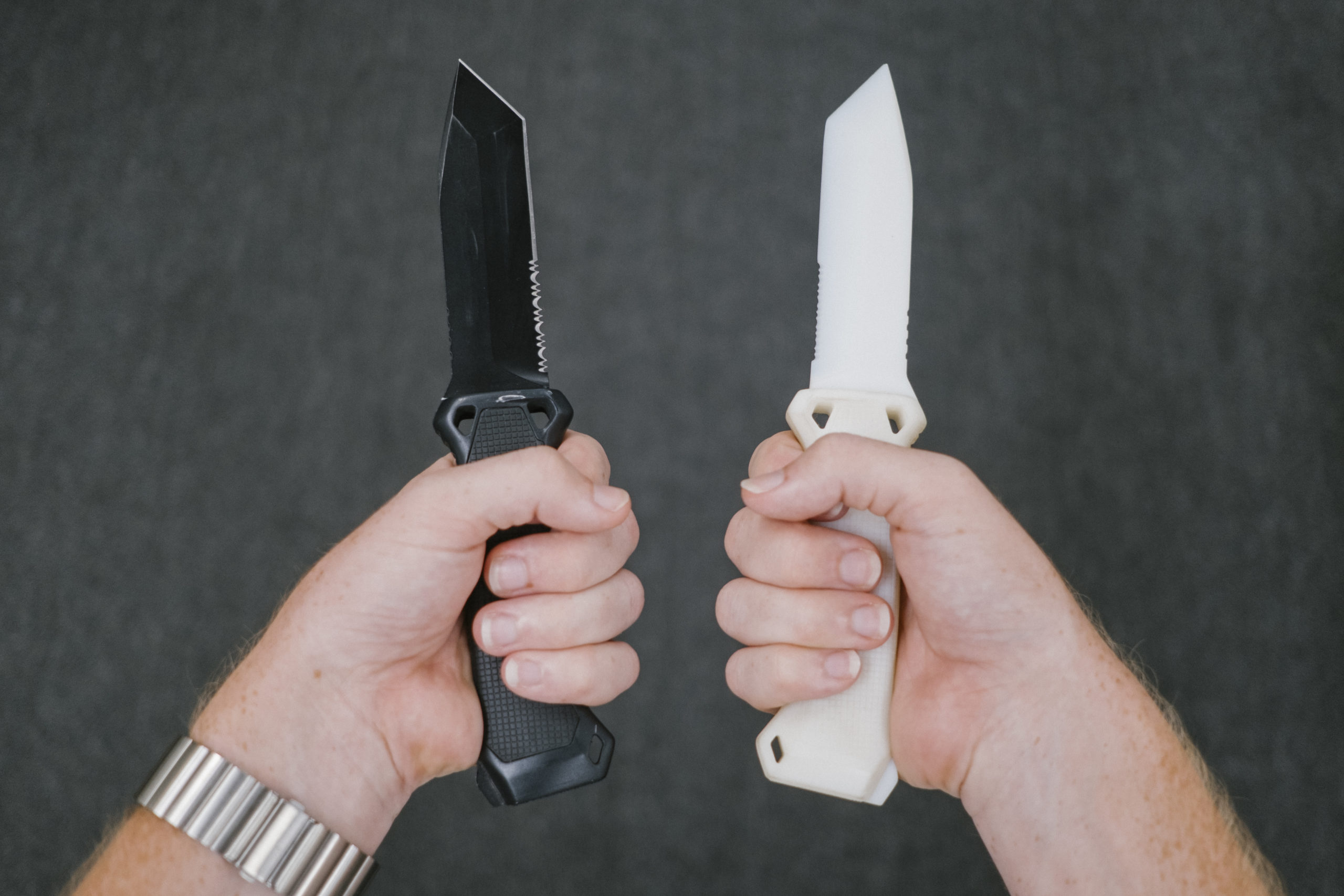
We sat down with the engineers at STEL to discuss their best tips and tricks to ensure a smooth and successful prototyping process. With their combined experience of what does (and doesn’t) work, this is what they recommend:
1. Ask yourself: What is my main goal for a prototype?
A prototype without an articulated purpose is just another thing cluttering up your studio. Everett Johnson explains: “there are different means to prototyping. During the first steps, you have to focus on what the model is going to target–be thoughtful on the specific questions you want answers for, and then thoughtfully answer them.”
Begin by identifying what’s more important for your prototype: looking like the final product, working like the final product, or both.
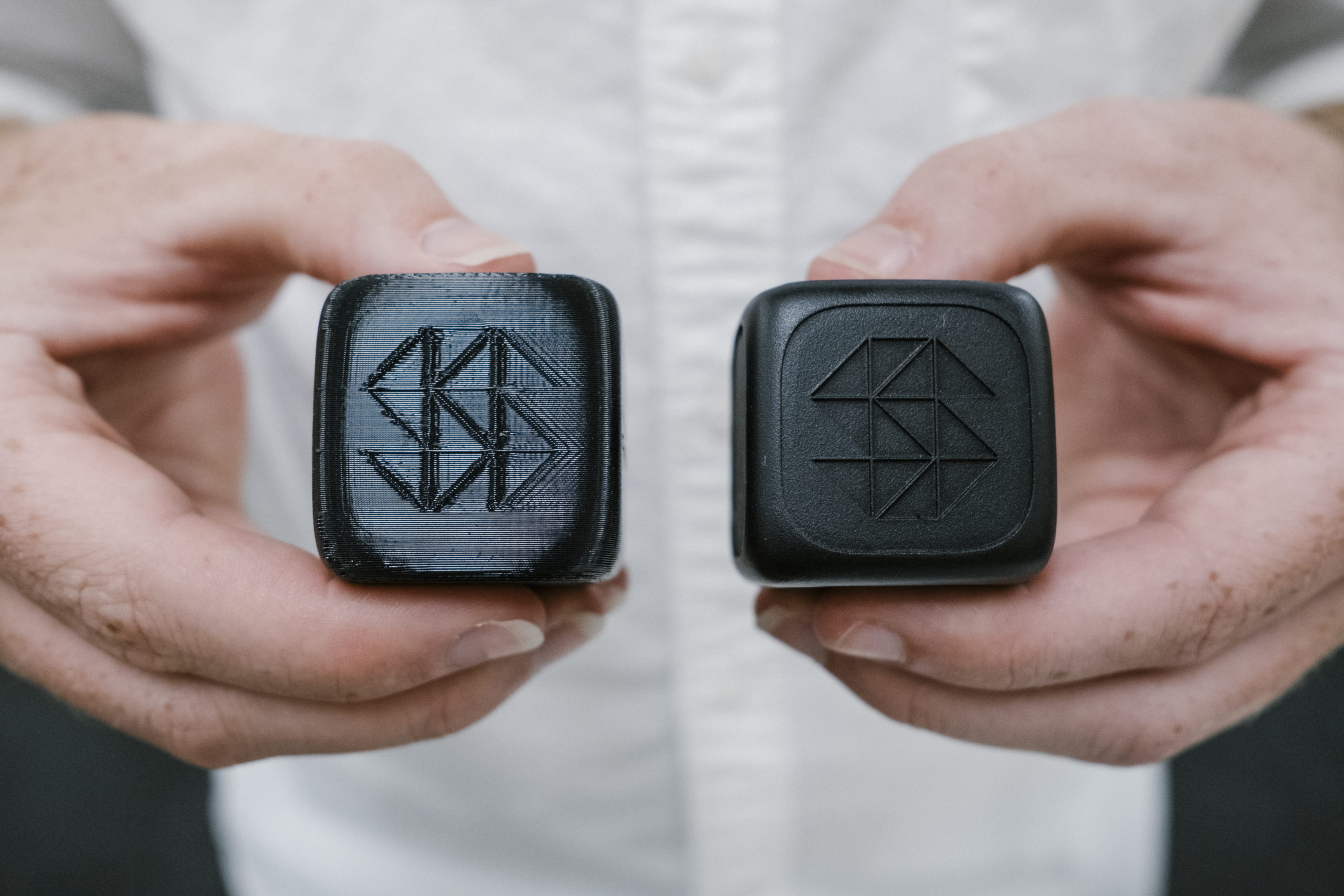
Looks-like models are created at a higher resolution with the intention of studying the overall appearance of a product, as well as the intricate details of it’s surface, edges, and textures. These models are purely aesthetically focused and serve as great tools to understand what a product will look and feel like in the user’s hand.
Works-like models are intended for functionality and mechanical testing; something that will display the strength and rigidity of a product. These prototypes might not be the most beautiful, but they definitely will give you an understanding about what works.
Mulin Yang explains: “Outside of the studio, I see people creating their prototypes with the combination of the two, and while this isn’t necessarily wrong, you might want to make sure you aren’t spending unnecessary time and money on prototyping; determine your intention to get the most out of it.”
2. The 3 F’s: Form, Fit, and Function
While articulating the ultimate goal of your prototype up front is critical to an efficient, effective prototyping process, every new prototype is an opportunity to study and improve the 3 F’s. Form, Fit, Function
Nick Wong describes why this is such an important component in his process of prototyping: “When I make my prototypes, I tend to work on them in the order of developing the form first, followed by fit, and then lastly, how it all functions. In every variation of prototype or product, they all work together, but require separate attention and studying as well.”
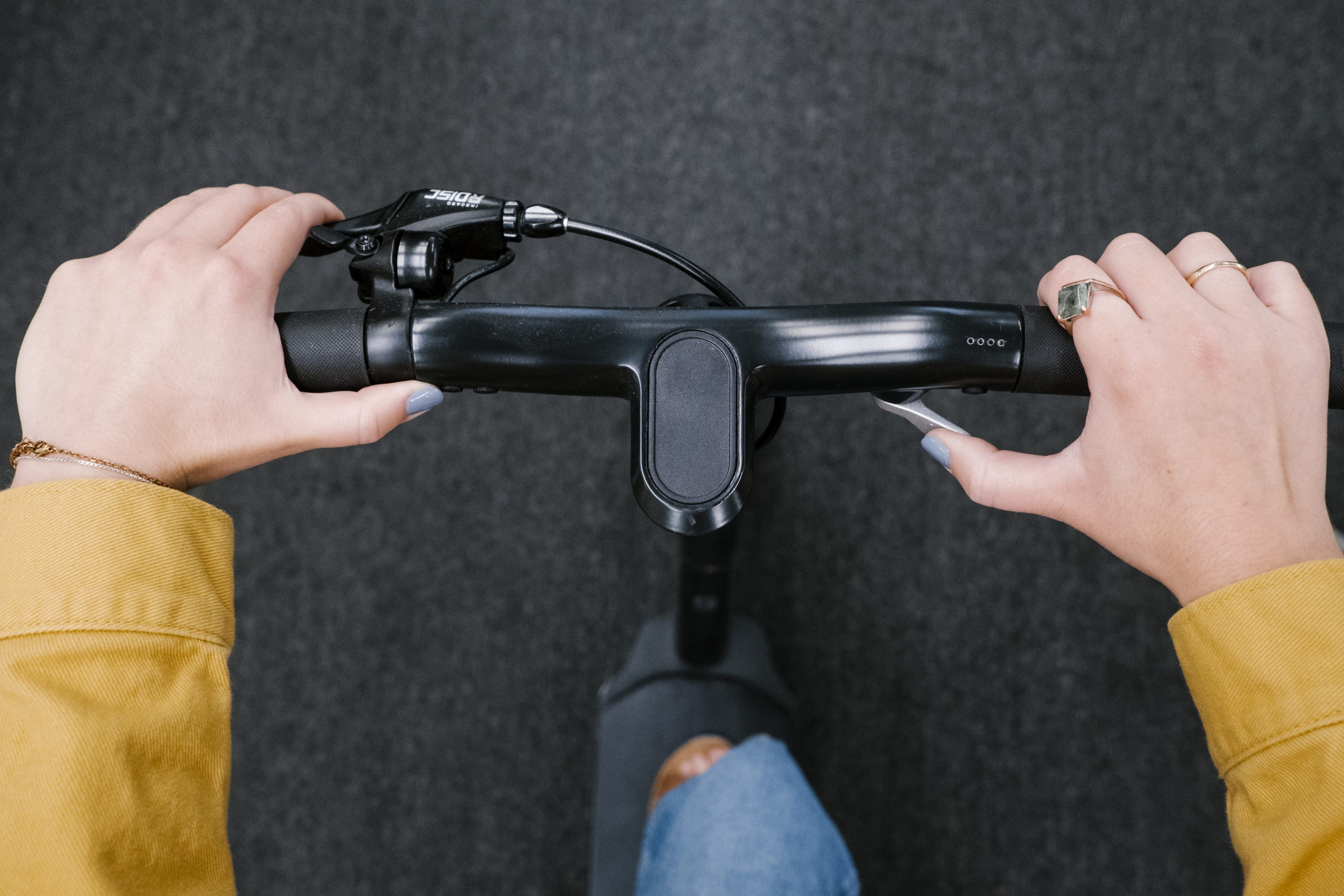
When considering form, think about the housing in which any of the functionality lives in. What is its shape? Its size? Do those form factors create an optimal environment for the internal components of the product? Could the form be even more optimized for user experience? Form also refers to the ergonomics of the prototype in relation to the user experience. How does it feel in your hand? Does it fit on or with your body? Is it easy to pick up and use? Both looks-like and works-like models can be used for studying the form of a product.
Fit studies focus solely on how each physical component of the prototype join with one another to create the final assembly of the product. For example, parts may need to slide against each other (a loose fit) for mobility, or be closely bonded (a tight fit) to promote strength or waterproofing. Studying fit allows you to understand how each part works together to create a whole product, and how different fits yield different features.
After studying the shape of the prototype and how it works with a human user, functionality tests a prototype’s ability to withstand the environments and situations it is intended for. Where is the product going to experience the most wear and tear? What environment will the product be used in? What material is best suited for intended environment? Will that affect how well it will work or how long it will last? Studying functionality ensures the prototype is built in the most durable way, based on the intended use and user.
3. Verification is key.
Verification is the primary goal in prototyping, but it can often be easy to lose sight of what exactly you are verifying, especially when asking a variety of questions and studying a variety of factors.
“Prototyping allows you to validate concepts and design direction in a very direct and effective manner, especially when looking for certain answers,” Director of Engineering, Jared Naito states. “This allows you to reduce development timelines because you’re able to identify shortcomings through verification and pivot early on.”
4. Give yourself options.
Test a variety of materials, processes, geometries, etc. to ensure that the fit, form, and function are as optimized for the product’s ultimate goal as possible. Prototyping several options can help us down-select which initial product requirements are most crucial for a complete, final design. Prototyping is inherently a process revolving around options, so intentional experimentation is critical.
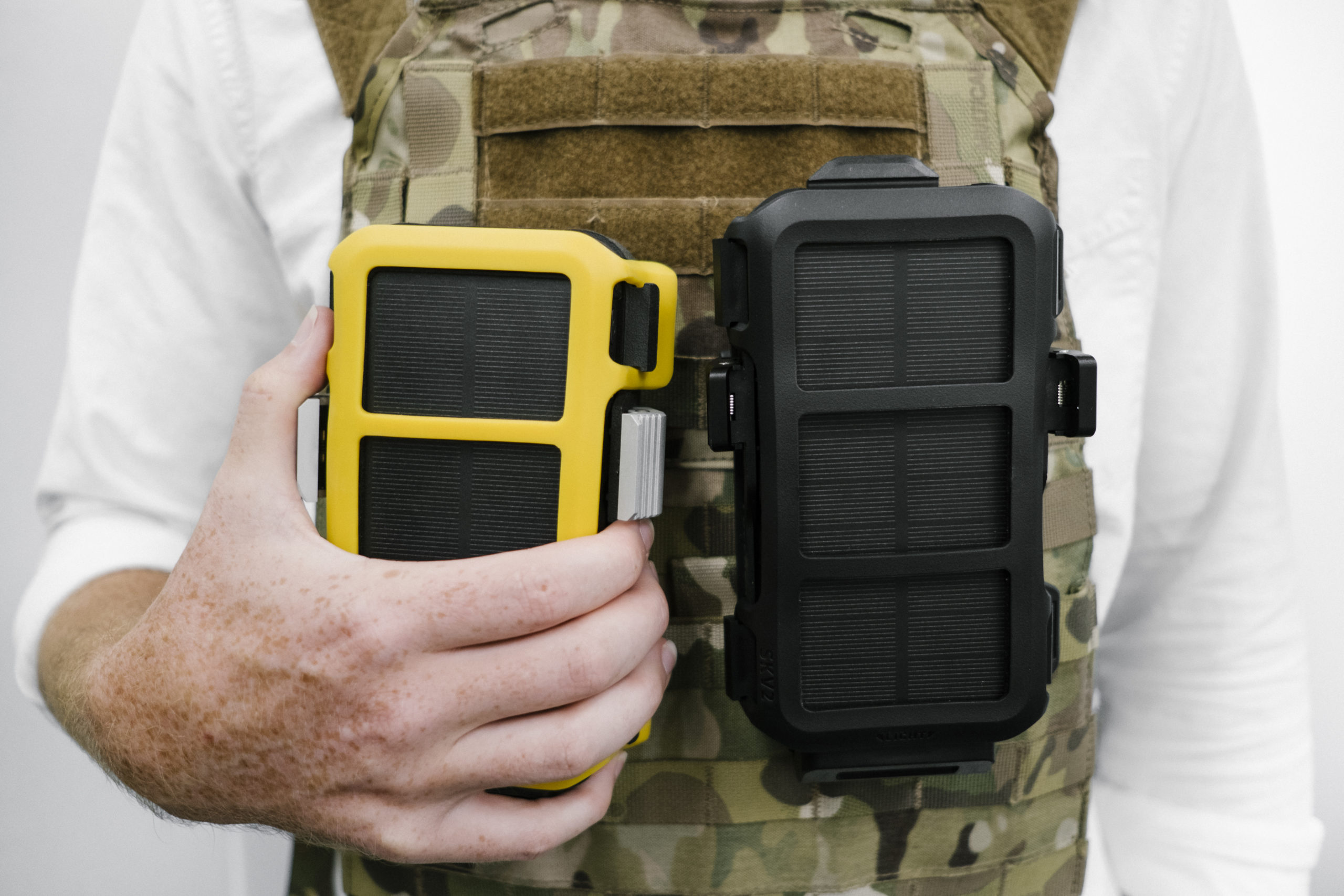
5. Consider 3D Printing for your prototyping go-to.
The technology surrounding 3D printing has evolved exponentially in recent years. With the accessibility that now exists with 3D printing, the prototyping stage for products has become more cost and time efficient than ever before, allowing for more rapid and accurate verification.
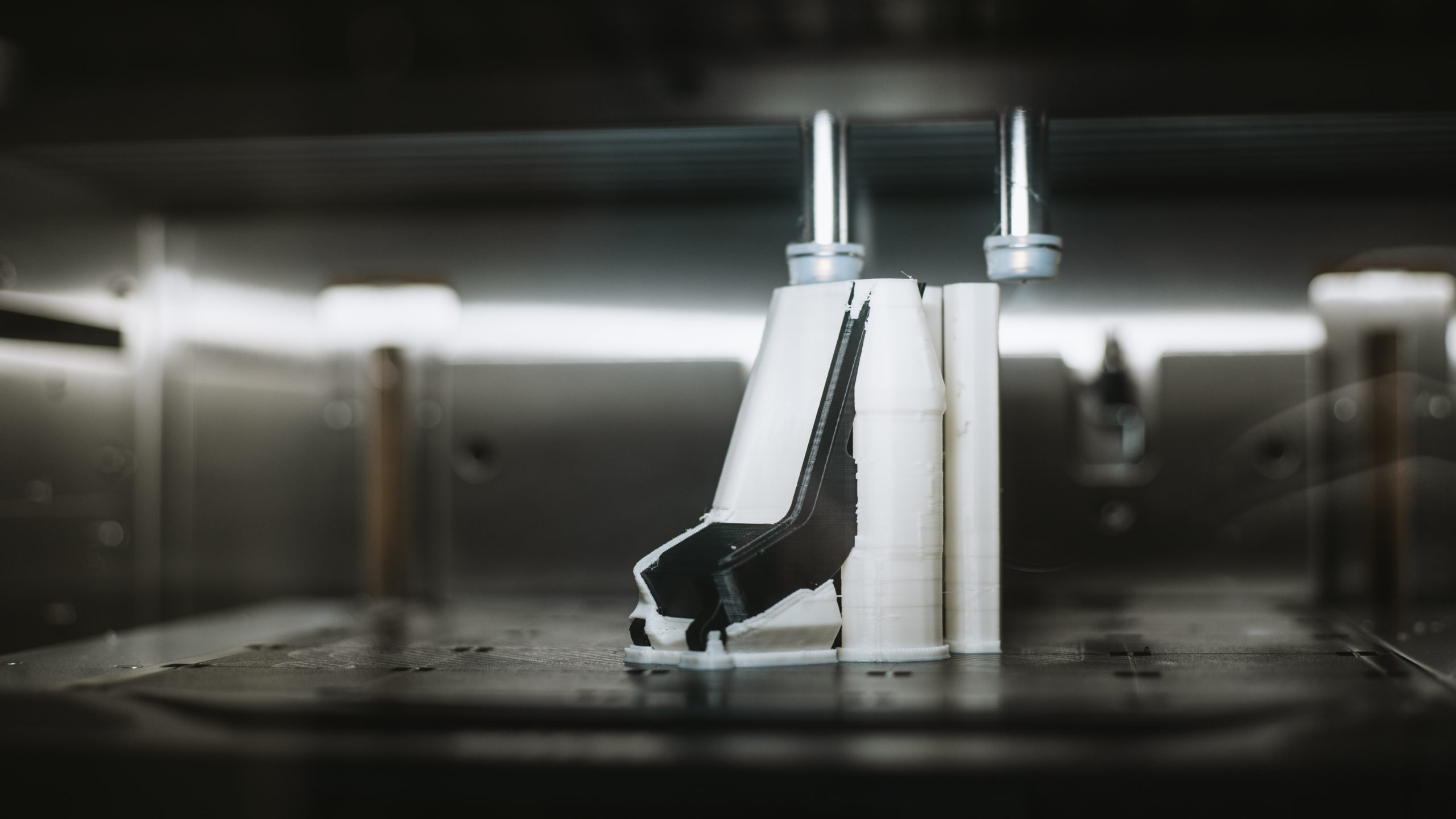
—
While there are hundreds of other tips and tricks for successful prototyping, these are the five we live by in the STEL studio. Looking for more prototyping best practices? Our engineers check these resources to stay in the know:
No matter what you’re prototyping, remember it will only be a prototype, not the final product. It’s purpose isn’t to be perfect. Ryan–COO of STEL–explains, “It’s called prototyping for a reason, don’t expect a production level part right away. Prototyping is the phase that enables a production level part without a hitch.”
Want to get your own prototype started? Let’s get going. Visit STEL 3D Labs to start the prototyping process, or reach out to our full design team.
In the world of product development where different design languages are spoken and different disciplines must be integrated to build a cohesive product, the tools and resources a design team uses are critical. But as much as these tools change and advance, it’s not their technical capabilities that matter; it’s about how product designers are able to use them. In fact, many of these tools serve far beyond their initial intention to aid in the product’s final development.
3D visual design is no exception. The perfect example of a tool that has become integral to the modern product design process, 3D visual design and digital rendering can dramatically change how a product design team works together to bring a product to life. We sat down with some of STEL’s Visual and Industrial Designers to dive a little deeper into the power of 3D visual design in product development, and what it means to us in our studio.
Defining 3D Visual Design
3D visual design, or digital rendering, is the practice of digitally creating or recreating an object to represent reality. Every modern cell-phone commercial, laptop ad, and fitness watch display that features close up shots of it’s most impressive design details have (almost) definitely been a digital recreation of the product.
“3D visual design is taking a product’s digital ‘blueprint’ and transforming it into a realistic vision of the final, on-the-shelf product. We are the photographers of product design, the digital photographer. We create the lighting, we set up the backdrop, we choose the angles, all so we can get the shots we need and make the product look as good as it possibly can.”
-Alex Short, 3D Visual Design Lead
Visual designers, both at STEL and in the field, have only become more and more skilled in digital “photography,” pushing the limits far beyond what traditional photographs could do for a product and its marketing. However, to say that 3D visual design is simply the recreation of a product is selling it a bit short. As Ryan Thomas, STEL’s Senior Industrial Designer, explains:
“Renderings are like analogies, they make things that don’t seem attainable feel familiar.”
This is where the real narrative with visual design begins. Beyond the 1s and 0s, the technical training, and the ever-evolving softwares, visual design is creating a new relationship between the manufacturers, designers, visionaries, and customers. Over the last six years, 3D visual design at STEL has become the glue that integrates all phases and teams in the product development process together by creating a universal means of communication. It’s quickly changing the way we look at, and talk about, product.

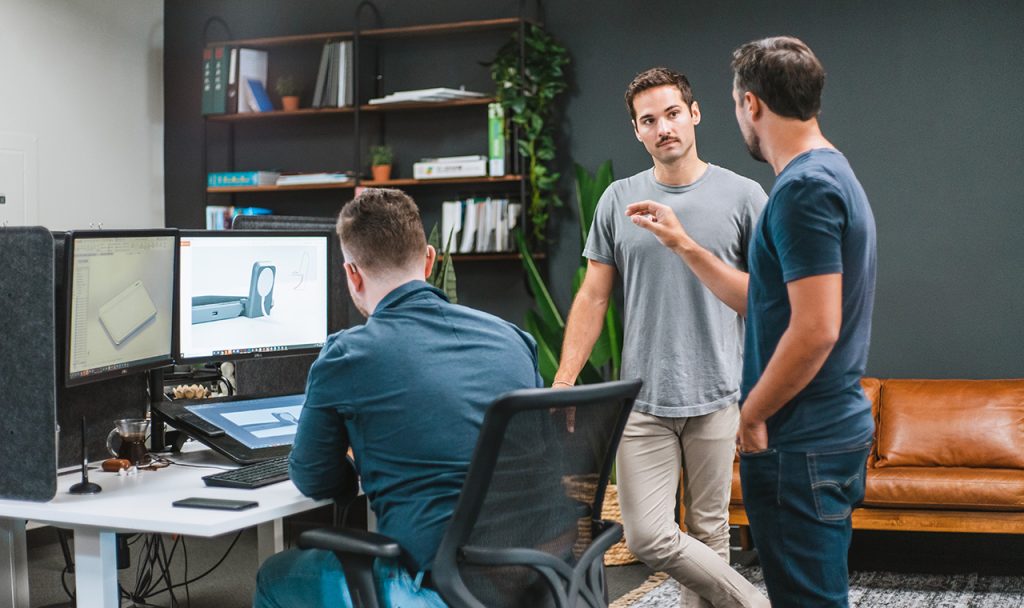
Realer Than Real
Visual design enables control. In the old days of designing, manufacturing, and marketing, the only option was to build the physical product and either take photos of it or recreate it as an illustration. With 3D visual design, we’re creating something that’s combining the needs of both representation and realism, in a completely custom and controllable way.
It’s easy to confuse this digital product recreation as deception; designing every detail of a product to be absolutely perfect to entice the consumer. Instead, think of it this way—is a fictional novel deception? The details of a story or series of events may be creatively drawn up in the author’s mind, but the feelings and circumstances that they create are meant to feel very real, perhaps more real than in a work of nonfiction. Because the story isn’t sharing a true turn of events, the author has to work even harder to create a story that the reader will buy into. Ryan explains it this way:
“It’s about capturing emotion and catering to the emotion of the target audience, putting them in a place of being able to imagine themselves in the environment that a visual designer has created. It makes people want to reach through the screen and touch something because it looks so real. It can almost trigger a more deep emotional response than a photo when you can curate the most perfect, intended environment a consumer could imagine.”
-Ryan Thomas, Senior Industrial Designer
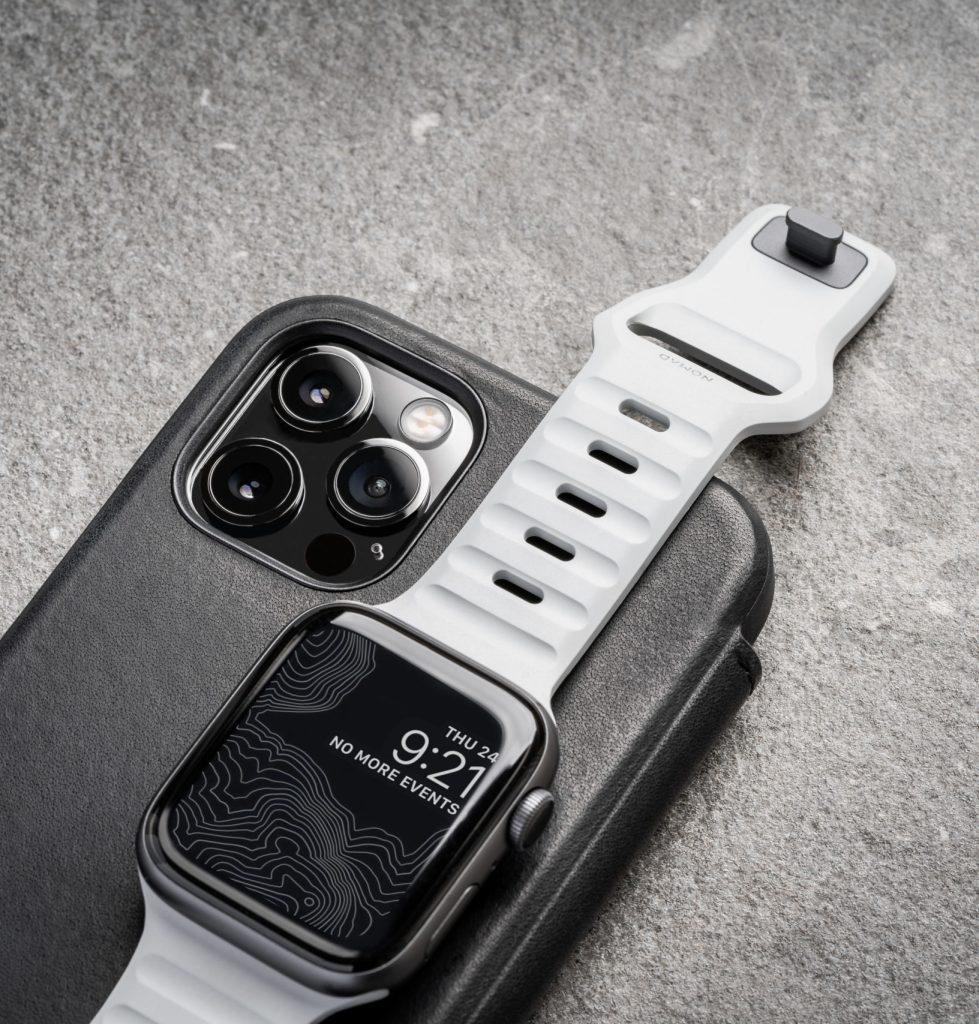
And that’s the key, creating an enhanced reality, even more real than if we used a photo. If someone sees a photo of a person holding and enjoying a product, then they’re seeing the experience through that person’s eyes. With digital rendering, we have the ability to put a product into someone’s mind, to draw them in the experience and create a visceral reaction that is custom to them.
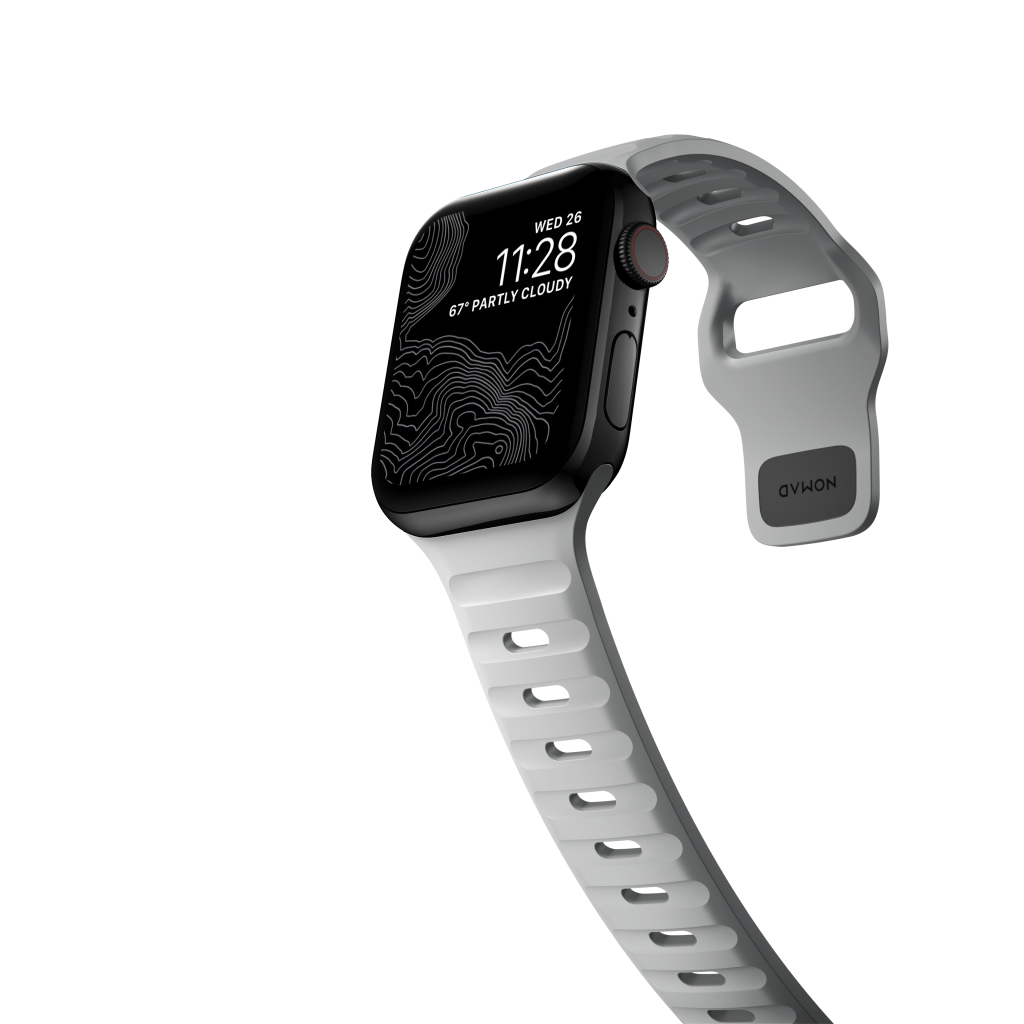
“Context is huge. If you have a product out of context, it’s hard to see how it would fit into your life. Having it in an accurate environment shows how the consumer can, and would to, use it. Making the imperfect, perfect.”
-Kaleb Wika, 3D Visual Designer
From a logistical standpoint, we can achieve a look and feel that’s not possible with photography, at least not attainably. With a rendering, we can get lighting from an infinite number of unique angles, get micro-level close-ups, and switch between views with a snap—all without ever picking up a camera or stepping foot into a studio. Digital rendering isn’t just about creating a picture perfect representation of a physical object, but what that representation can communicate to a consumer and the emotions that can evoke.
A Common Language
3D visual design evidently plays a huge role in the product consumer experience, but digital rendering is equally important for design teams and their clients when manufacturing something from scratch. At STEL, we work with innovators from the very beginning of the process, when their ideas are just a few notes jotted down on paper, and nothing’s more important than being on the same page.
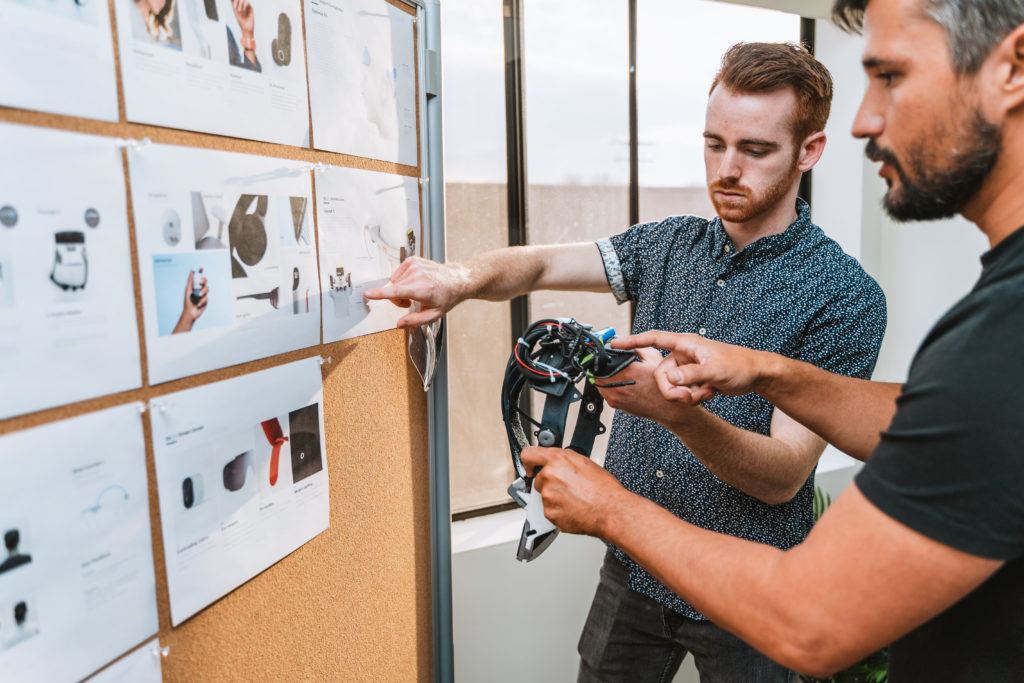
Engineers, designers, marketers, clients, and consumers all have different motives and means of communicating those motives in product design, which all need to be equally understood and considered. Particularly when we enter the iterative phase of design where decisions made are paramount and each group’s goals feel the most disjointed, nothing achieves consistent and powerful communication quite like digital rendering.
At STEL, 3D Visual Design is the common language spoken between every step of the design process, as Ryan points out.
“Engineers, designers, clients, consumers, and marketers can all understand visual design and use it to communicate what they need. Rendering is the culmination of a multitude of different voices and perspectives to see the combined future efforts in the present. Everything that we are all working on in parallel can be seen this way.”
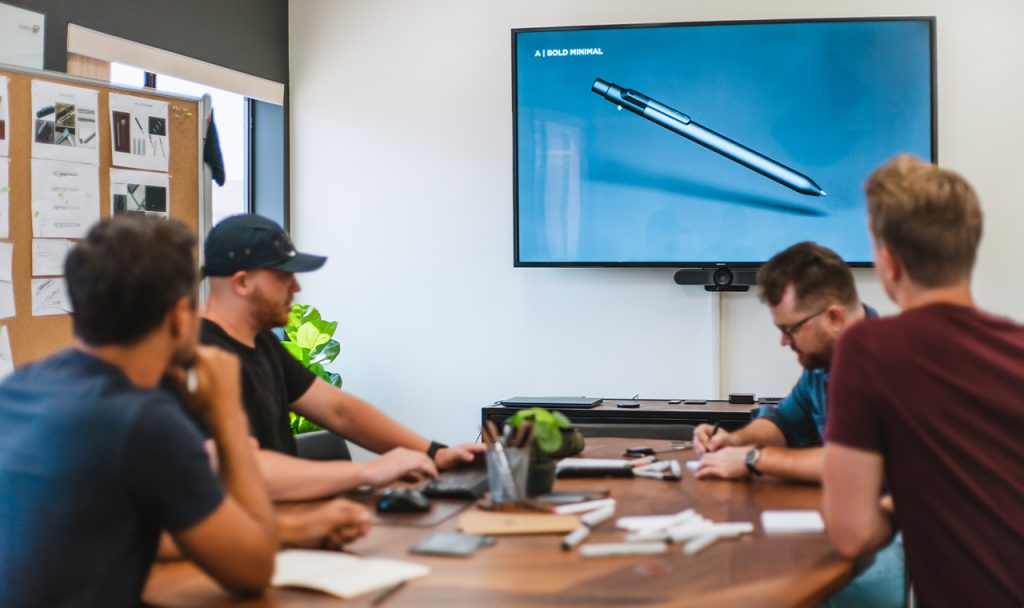
There’s no hiding behind a digital rendering; everyone’s needs and means of meeting those needs are out in the open. Engineers can visualize the mechanics of a product and how manufacturable those facets will be. Industrial designers can grasp the aesthetic of the product and ensure that both functionality and beauty won’t compromise one another. Marketers can pinpoint what elements of the product are most likely to attract consumer. And clients can really start to see what started as an idea in their head come to life. It allows us to not only refine design concepts before moving into production, but it also gives a 100-percent accurate representation for every creative in the process.
At STEL, digital rendering is our standard means of communication at every step of the product design process. From start to finish, this communication is consistent, and every player in the game can understand the language.
Creating Life, Digitally
While precise product details and accurate technical specifications are critical to a strong render, we strive to create images that go beyond the hyper-real result, something that actualizes the essence of the product and the impact it could have on the consumer. So much of that essence is enabled by the flexibility and adaptability of 3D rendering, something that traditional photography lacks, but is critical in bringing a product concept to life.
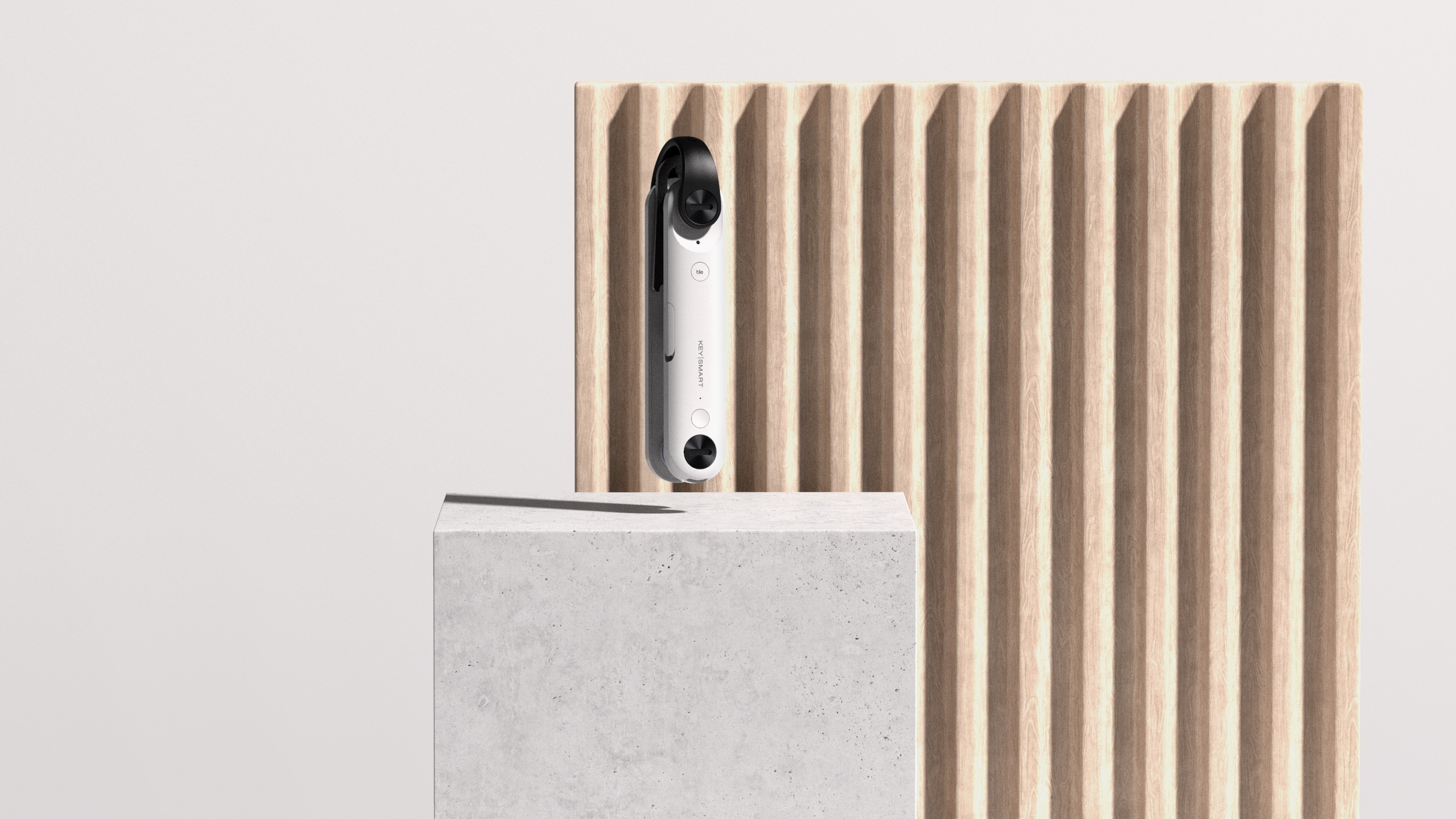
“Digital rendering’s most prominent benefit is the freedom to create infinite versions of something with no time wasted or cost added. You’re able to customize your image so much more. In photography, you can only use one light at a time, one environment shot at a time. With rendering, you can place the light everywhere and change the environment seamlessly to make the product look as best as it can be, all within a matter of minutes. That would take hours or days with photography.”
-Alex Short, Lead 3D Visual Designer
To enliven these products through digitalization, we develop close-knit relationships with our clients and their products from the very start. The intimate knowledge of the product, the client, the consumer, and the impact they all have on one another is integral at every level of the design process. That familiarity can’t be understood or rendered by someone outside of the project, which is why we don’t outsource our 3D visual design to other firms.
“That’s the coolest part of our visual design, it’s in-house. We know what features are important to highlight and what voice the product needs to have to meet the needs of the client. If we hand it off to another firm, they won’t pay the same attention to the details of the product design itself because they didn’t spend time on them, they just want to render something that looks good. We have an added level of detail because we’ve been invested in the entire process.”
-Ramsey Carter, Industrial Designer
Every product and every client is different, but the power of the digital rendering process will always remain the same. We’re taking the client’s needs, the product’s highlights, and our expertise into account and creating something that can stand above photography, and will truly portray the product and its impact. We strive to give ideas more than just a digital identity, we want to give the product a personality.
Interested in learning more about visual design in our product design process? Check out what else we do to bring impactful concepts to life, or get started on your own.
There’s a constant dilemma we face at STEL every single day. As a team made of individuals that are equally passionate about building impactful products and creating a stronger, better future for our planet, how do we reconcile the fact that we contribute to the waste that negates our initiative for sustainability? An unfortunate and frequently ignored truth: product design firms and manufacturing resources are facilitating and perpetuating the negative impacts of product development today, and we’re often there from the very beginning of a product’s lifecycle. With this industry’s current normalized practices, we’re the ones inherently creating current and future waste, from product ideation to being placed on shelves.
Product development processes and ethical guidelines were established well before carbon emissions, greenhouse gases, and other terms our society has become acutely aware of in recent years, and haven’t adapted. Sure, technology is becoming more advanced and efficient, but those improvements generally do not yield more sustainable outcomes than what existed before it. Better, faster, stronger rarely equates to cleaner, greener, less environmentally harmful.
And, as anyone can attest, change is hard—particularly in an industry this fast moving, and this reliant on iterative design. At the first step in the product life cycle, it’s our job to over-produce, creating iterations to test, re-test, scrap, and re-design. Waste is inherent in our process, almost by necessity. At STEL, we’re beginning to change our mindset internally, examining what sustainability really means for us on an individual level, and looking at the big picture to see how we can improve every day. There’s still a long way for the product development industry to go to shift this innately unsustainable discipline, but even the smallest of firms can, and should, start somewhere.
What Does Sustainability Really Mean?
A current, prominent question that doesn’t seem to have as straightforward of an answer as one, especially in this industry, would hope: What does sustainability really mean?
According to the Oxford Dictionary, sustainability is the “avoidance of the depletion of natural resources in order to maintain an ecological balance.”
Based on that definition, it comes down to economics—the number of natural resources we have versus how many we’re using to create a product. But, it’s not always that simple. Drawing from an article written for Fast Company, the authors discuss the confusion that comes with terms like “sustainable” and “eco-friendly” in regards to marketing and product packaging:
“To people who specialize in sustainability, a material’s environmental impact comes down to trade-offs between elements such as carbon footprint, water consumption, and waste production. But these aren’t calculations most people are familiar with…”
Katherine Eisenber, Jamie Munger & Charlie Paradise, Fast Company
Companies are using this to their advantage, promoting their product’s sustainable advantages, while downplaying the disadvantages the product development process yields. Most commonly, a business can state that their product offering is “more environmentally friendly,” but rarely will articulate how exactly it is reducing planetary waste. Even more prominently, these businesses will withhold the true damaging impact associated with the production of these products, which, more often than not, outweighs the benefits of their “environmental consciousness” to begin with.
This confusion doesn’t stop with the consumer markets either; it also exists heavily in design firms, just under a slightly different guise with significantly less scrutiny. How do we truly define what sustainability means for product development, and draw attention to it in this space? It can be seen as a relative term depending on what we’re talking about. It may not be “sustainable” for us to produce a line of new products, but the waste could be worth it if we’re developing a product that could solve ecological problems in the future. Sustainability is a moving target, and one we need to start aiming at more consistently. It’s nuanced and difficult, but we’re not shying away from the priority it needs to take in the STEL studio, and in product design as a whole.
There’s Always a Cost
Companies who lead with a sustainable mission are huge inspirations for our team, both as individuals and as the collective STEL. Most notably, and most widely recognized for the leadership in their sustainable mission and business goals: Patagonia. It’s evident through not only their messaging, but their behavior that their ultimate goal is creating a sustainable standard in an industry that is a primary threat to environmental protection. A crucial element of achieving that goal is by being brutally honest; the first line seen on their Footprint page is, “everything we make has an impact on the planet.” Past advertising campaigns have even encouraged customers to not buy new products, but instead reuse and repair their existing products to reduce impact.
This type of perspective is something that we strive to be at the forefront of, and perpetuate its percolation throughout every production industry. Taking after Patagonia’s directness and honesty, we take ownership of the fact that we’re creating waste and making a negative impact with every single new product we design and release on the market. And this extends beyond iterative product designers; it’s true for everyone. Every toilet we flush, every shoe we buy, and every light we turn on has a cost. Given the nature of a wasteful industry that relies so heavily on iteration, we are looking at what creating sustainable change looks like from a shifted perspective. Allie Vaughan, a STEL sustainability pioneer, explains what our studio’s ultimate goal is:
“In product design and development, sustainability means optimizing products and processes to use as little raw material (of any kind) as possible. Sustainability often speaks to impact, and in my role, that means ensuring that we create products that do not consume more than they need to and aim to use less than expected.”
Allie Vaughan, Head of Product at Luno
In short, no one is expecting us to have zero carbon footprint or zero impact on our environment—that’s impossible. Instead, we should be expected to ask those difficult questions of ourselves, to take in new perspectives of how to be sustainable. And there are things we can do to offset these costs, like contributing to 1% For the Planet with every project we take on, and using recyclable production materials wherever possible.
Looking at the Bigger Picture
For STEL, and for other product design firms, we have a unique opportunity. Unlike other companies, we exist at the beginning of the process, designing the products for the future. In essence, we have the ability to find new perspectives, influencing the way that other industries view consumer goods. This means we need to prioritize the balance of profit and purpose, and start looking at the big picture when we’re defining success for our clients.
Sure, we all have the ability to design a product that will sell, but if it’s putting even more of a drain on our environment, then what long term impact are we really creating? And is it worth the quick fix processes that are typical in this industry for a short term profit? At STEL, we’re always looking at the bigger picture and taking into consideration the lifespan of the product, even if it takes a little longer to create, or costs a little more to bring to life.
“It’s easy and cheap to make a disposable, unconsidered product; it’s time-consuming, challenging and oftentimes expensive to create a quality, reparable, recyclable product. One of the steps we can take is to create products that first, will last, second, can be repaired easily, and third, can be taken apart and recycled.
Allie Vaughan
This will require unbelievable amounts of attention during the design process as designers consider material types, joints and intersections, access to the internals, failure points, and more. There is no easy fix to this, but I believe if we start training our designers to think bigger and deeper than aesthetics and cost, there will be an elevation in the sustainable nature of making products.”
This means we have even more responsibility as product designers; we have to be more than effective and we have to shift perspectives for both clients and customers. At STEL, we pride ourselves in creating products for disassembly, but we are now taking sustainable product design one step further. More than any other industry, we can’t simply put our heads in the sand and say it’s not our responsibility; we must start designing products that solve environmental problems and design them in a way that reflects that purpose.
Speeding Up the Process
It’s not hopeless. The product design industry is uniquely and fundamentally dependent on innovators who are passionate about creating products that won’t only pay the bills, but will change the world. Just looking at the talented professionals on our own team and across the field, it’s easy to see that we have the creativity and flexibility to create real environmental change. This creativity, flexibility, and fire for innovation now needs to be committed to something a little larger than the next consumer electronic. Change is hard, but it’s necessary.
In order to enact this change and live up to our commitment, we’re using a library of recyclable, plant-based, and non-toxic materials that allows us to create products with minimal environmental impact well beyond their lifetime. To improve the sustainability of production both in our own studio and with our clients, we utilize materials, manufacturers, and design methods that are environmentally conscious. And this is just the beginning of how we’re shifting our processes.
Our clients, the brands firms and design studios build products for, are making this shift as well; it’s never been more important for product designers and their teams to start creating in a more sustainable way. An article from Sopheon states the companies we create products for are already beginning to adjust their mindset. A McKinsey Global Survey found that:
- “76 percent of executives say sustainability contributes positively to long-term shareholder value.”
- “72 percent of executives consider sustainability as ‘extremely’ or ‘very important’ for managing corporate reputation and brands.”
- “85 percent of CEOs say that sustainability creates new market opportunities.”
- “75 percent of companies either broke even or profited from sustainability initiatives.”
“Innovation and Profits with Sustainable Product Development,” Sopheon.
This is certainly encouraging: it will be much easier to convince companies to practice sustainability if it makes good business sense, but that’s not quite enough. We need to start thinking bigger when it comes to product manufacturing—if our commitment to sustainability is always tied to the almighty dollar, then it’s going to surely fluctuate over time.
For us at STEL, we’ve started thinking bigger than business. With every new product we design, how are we impacting our world? Are we solving a problem for our planet or creating a new one? Is the purpose behind the project more valuable than the profit in front of it? What is truly worth more? By asking these questions, we’ll probably be losing out on some opportunities for short-term profit. If we’ve learned anything from history, it’s that profitability isn’t always the right choice. Your bottom line may look great now, but at what cost later?


